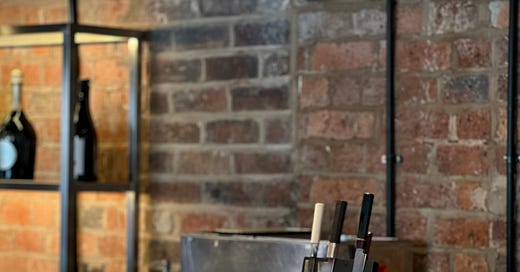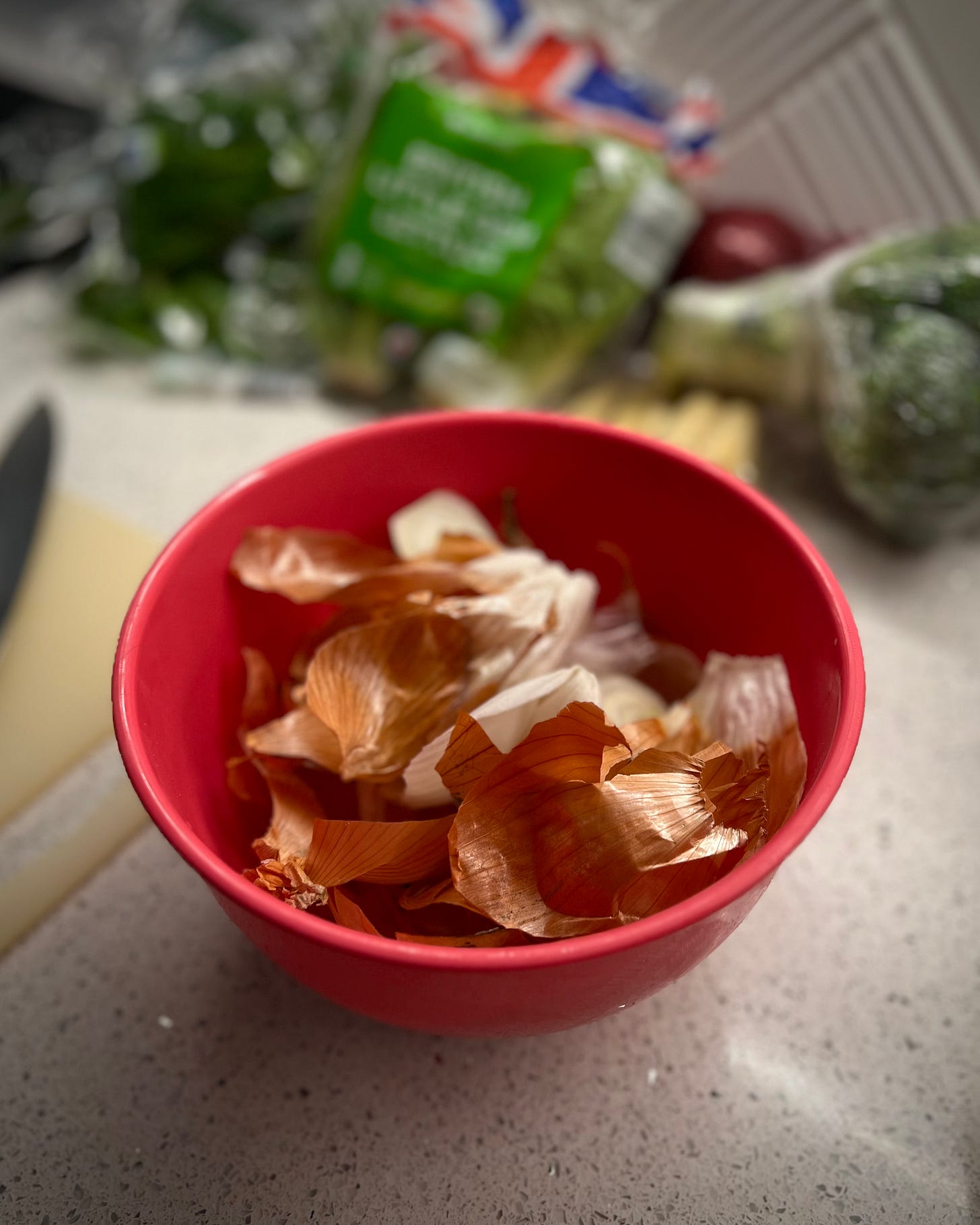vii #33: 7 kitchen hacks
Maybe you don’t need a brand new kitchen to make cooking easier and more enjoyable. Maybe you just needed some simple tips and tricks you may not have known.
vii is a weekly newsletter featuring an exploration into seven somethings.
To get every issue straight to your inbox, click
As someone who is on the road to a new home and therefore will be saying goodbye to her (not that) new (anymore) kitchen1 in favour of one that definitely requires an upgrade, I thought I’d share some of my favourite kitchen hacks. These are all using things you likely already own, or only a small expense for some great benefits.
BIN BOWL
Probably my most often used tip of all of these, is having a bin bowl when prepping food. It’s as simple as it sounds - dedicate a bowl to anything you’d otherwise put straight in the bin. It will keep your work surface clearer and save on repeat trips to throw scraps away. I gravitate towards using this hot pink bowl that I “borrowed” from my mother-in-law and am still yet to return…
BOARD SAFETY
We know the dangers of blunt knives, but an unstable chopping board can be just as hazardous. To add some friction and keep it steady, all that’s needed is a damp cloth or tea towel placed underneath it to stop it moving whilst you’re preparing ingredients. It goes without saying that keeping the tips of your fingers in tact is definitely key to enjoying being in the kitchen!
PEELY HELPFUL
I’ve shared an alternative use for a vegetable peeler before but it’s worth repeating. Did you know that you can use a Y-shaped vegetable peeler to trim the pastry overhang on a blind-baked tart? It gives so much more control and precision than a knife.
The other peeling tip I think is a little more widely known but, just in case it isn’t, I’ll share it anyway. A teaspoon is all you need to peel a thumb of ginger. It takes off the very outer skin and maximises the ginger available for use in your recipe.
THAT’S GRATE
As a keen baker, but not always a prepared one, my butter is usually at the back of my fridge and therefore rarely soft enough for the bakes I want to make. Instead of waiting the required time for butter to come to room temperature on the counter, I’ve found that a brilliant shortcut is to coarsely grate the block as if it was cheese. Don’t get me wrong, I’d rather have the foresight to soften my butter but this is a great solution for the impatient and unprepared.
EASY SQUEEZY
This next tip is taking a leaf out of the book of professional kitchens (like Albatross pictured below) and one I wish I’d done sooner. Squeeze bottles like these aren’t just for sauces but are also an excellent device to dispense frequently used ingredients like olive oil with more accuracy than the bottles they usually come in. If you’re partial to making your own herb oils (remember my wild garlic oil?) then these are definitely essential!
LIQUID LEFTOVERS
Aquafaba (or chickpea water) and its uses are becoming increasingly known, offering an alternative to egg whites to make vegan meringues or mayonnaise. Much like pasta water, it’s a starchy liquid and so don’t neglect the perks of adding a splash of either when finishing a sauce. Liquids that otherwise get forgotten and thrown away also include pickling liquor - why not try repickling vegetables in the same liquid or using its sharp sweet vinegaryness (similar to a gastrique2 or agrodolce3) to add some brightness to a dish.
Liquid leftovers are everywhere and the freezer is your best friend, providing an excellent way to save ingredients for another day. Ice cube trays or even popsicle moulds are a great way to freeze things into smaller quantities should you need to (think tomato purée, pesto, leftover sauces).
MAXIMISE INGREDIENTS
Whenever we buy a rotisserie chicken, I always put the bones on to boil and make stock. I tend to do this twice over with one carcass and reduce the liquid down before freezing. Homemade stock is a wonderful addition to anything you’d otherwise simmer with water and adds an easy boost of flavour and collagen.
Leftover vegetable peelings can similarly be used to create a flavourful stock. If you have access to excess freezer space, you can freeze your vegetable scraps until you have enough to make stock with.
In terms of maximising your ingredients, cooking seasonally will bring the best flavour out of produce, which can be capitalised on through pickling, preserving and freezing.
I’m hoping you gained one or two new nuggets from reading this. Are there any new tips and tricks you’ll be implementing in your cooking?
Newsletters grow every time someone reads, likes, comments, shares and subscribes! If you’ve enjoyed reading this or other editions, please like, subscribe or—better yet—share it with someone you think may also enjoy it.
With kitchen reno #2 it will be interesting to see what I learned from the first time around but will no doubt be updating vii #24 with any new lessons
A gastrique is a sweet and sour sauce typically made with caramelized sugar, vinegar, and often fruits or other flavorings. Gastriques date back to early French cuisine and have been used in cooking for hundreds of years to add a balance of sweetness and acid to dishes. The term gastrique comes from the French word meaning acid or sour; one of the earliest mentions of this technique dates to the 1650s when it was used largely as a glaze or finishing sauce for meat






Great tips, Emma, and the butter one will come in handy! I do use a bin bowl and find it such a time and space saver.
A couple of tips about garlic I learned from TV chefs... To peel a clove easily, press it with the side of a cook's knife. It doesn't need much pressure, and the skin will then slip off.
The other one is to wash hands with cold water after preparing garlic. Hot water 'cooks' the garlic smell onto the hands.
Great hacks Emma. Funnily enough a reel of my microplaning a tart is my most successful on Instagram. All these people, watching me grate a tart case! Madness.